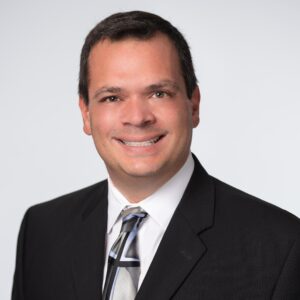Reimbursement realities: A shaky business environment
Reimbursement methods—whether through Medicare, Medicaid, or private pay—have inherent consequences for business operations. How effective are these methods in reimbursing for long-term care services, now and in the future? For answers, Nursing Homes/Long Term Care Management asked two association experts: Barbara Manard, PhD, vice-president of Long Term Care/Health Strategies at the American Association of Homes and Services for the Aging (AAHSA); and Cynthia Morton, MPA, senior director of Congressional Affairs at the American Health Care Association (AHCA). Their comments follow.
Barbara Manard, PhD, vice-president of Long Term Care/Health Strategies, AAHSA:Medicare has to do a good job of setting its payment levels correctly, which it does not do. As MedPAC has pointed out, and we certainly agree, the payment system does not properly reimburse for drugs—which are included in the Part A rate—and it does not properly pay for patients who need a lot of nursing care, as a opposed to just therapy. Those types of patients are severely underpaid.
Medicare payments are not targeted with respect to quality. We don’t have great measures of quality yet, but we do know that the more nursing staff you have, the better the quality. Homes that have substantially more nursing staff are not doing as well on the Medicare payments as homes that have fewer nurses, which makes perfect sense, because if you have more nurses your costs are higher. Of course, hospital-based nursing homes are losing money hand over fist, which is a terrible problem.
Medicaid payments are substantially below costs in many and perhaps most states, and that is also a problem. It is not just Medicare that sustains that shortfall, it is private pay. And private-pay people are then not only paying for themselves, but they are paying an extra share for the poor. It’s improper to put an extra burden on one set of frail elderly people to pay for another. That is a serious problem.
In a handful of states, Medicaid, like Medicare, does not properly target its payments to make sure that homes that are spending money on nursing get higher rates. Most state nursing home payment systems do that, but some, such as Kentucky and Oregon, don’t.
The proportion of private-pay people in nursing homes has declined as people who are lighter care and have resources have been going to alternative residential settings when appropriate. What we want is for everybody to be in a place they call home. We’d like everybody to be in exactly the place that best suits their needs and have the appropriate resources to do that. The problem is that our entire long-term care financing system is dreadfully broken. While we’re focusing on bobbing for Medicaid nickels today, the real problem is the need to find a better way to finance all of our long-term care.
We have had a chronic problem with financing long-term care—both nursing homes and home- and community-based services. We don’t have a good way for people to figure out how to finance their future care, so we’ve had to rely on Medicaid’s safety net. Private long-term care insurance is only a solution for a relatively small proportion of the population who can afford it, so we need a better solution. This is not a new issue; I’ve been working in this field for 25 years, and these are chronic issues. Medicare has become a worse reimbursement system in terms of how it’s structured than it was when I first started working in this field.
I hope for the best but anticipate little change. Every day we work with states to do the best that we can to ensure that frail elderly people supported by Medicaid have something approximating reasonable support. It’s not that most states aren’t trying; it’s that there are competing demands for their dollars. Medicare has the ability to fix its payment system faster than Medicaid. Our hope is that this will be accomplished. Anything that is going to reduce available funding for low-income people in long-term care is not sustainable.
Cynthia Morton, MPA, senior director of Congressional Affairs, AHCA:On the Medicare side, we are seeing patients with higher acuity. CMS recognized this with the addition last year of the new RUGs, which brings us up to 53 groups. Last year CMS came out with the “75% Rule,” which said that inpatient rehab facilities must have 75% of their patients in 13 diagnostic categories. That allowed nursing homes to treat higher-acuity patients, because there are some patients who inpatient rehab facilities won’t be trying to care for now. We saw those two events as part of this overall plan to treat higher-acuity patients in the nursing home setting.
We have a healthy margin on the Medicare patient. On the Medicaid side, however, we actually lose money on the average patient—about 10–11%. Speaking generally, in the nursing home environment Medicare patients are typically 10–13% of the patients in a facility. Even with that small Medicare population, we still make enough money on that population to cross-subsidize or to prop up the losses we take on the Medicaid patients. Medicaid patients are, on average, 67% of our patient population, but account for approximately 47% of our revenues.
There are a million reasons why states don’t pay an adequate rate. They don’t have to because there is no Boren amendment in the law anymore. State legislatures either can’t fully fund Medicaid, won’t fully fund Medicaid, or want to use the Medicaid money in other parts of their Medicaid budgets—maybe they want to expand home health and they don’t want to put more money into facilities. Some state Medicaid directors know that Medicare pays better because we haven’t gone out of business yet—on a large scale—from loss of Medicaid reimbursement. But if the Medicare reimbursement shrinks, that’s where we’re really in trouble, because that’s what is holding up the system.
Seniors are going to delay going into a nursing home. They’re going to spend their own dollars first in assisted living, so they’ll come into the nursing home sicker. We’re not sure if we’re seeing sicker Medicaid patients yet, but we are seeing sicker Medicare patients.
I think in the next five years, CMS and Congress will come to a better understanding that giving skilled nursing facilities (SNFs) reimbursement and then taking it away the next year is not a recipe for high-quality care. Quality care is partially dependent on reimbursement; it’s also dependent on good staffing. You’ve got to have the right people, but you’ve got to have the money to pay them and still operate the facility. I think Congress and CMS are coming to a slow realization that predictable reimbursement is the best recipe for a healthy SNF and for high-quality care. I think Congress and CMS will begin to “get it” over the next five years, and we’ll have more predictable funding.
Ideally, people who operate nursing homes would have a more predictable funding stream when it comes to Medicaid and Medicare. Now, I realize this is difficult because the Medicaid funds are coming from the state. If an operator knows in January that come July he’s going to get either the same reimbursement from his state that he’s getting in January or even a little better, he can make the investments in his building to bring it up to modern day standards—important, because a lot of buildings across our country are 30 years old. But he can’t make that investment or he can’t hire more people in January if, in July, he has a high risk of losing his Medicaid reimbursement because his state has to balance its budget, or if he knows in October that Congress is going to take away our market basket. That makes it difficult for him to make decisions earlier in the year. Ideally, all reimbursement would be predictable and he could go on and make the necessary investments in care. n
For more information, visit https://www.aahsa.org and https://www.ahca.org. To send your comments to the editors, e-mail peltier0507@nursinghomesmagazine.com.
I Advance Senior Care is the industry-leading source for practical, in-depth, business-building, and resident care information for owners, executives, administrators, and directors of nursing at assisted living communities, skilled nursing facilities, post-acute facilities, and continuing care retirement communities. The I Advance Senior Care editorial team and industry experts provide market analysis, strategic direction, policy commentary, clinical best-practices, business management, and technology breakthroughs.
I Advance Senior Care is part of the Institute for the Advancement of Senior Care and published by Plain-English Health Care.
Related Articles
Topics: Articles , Finance











